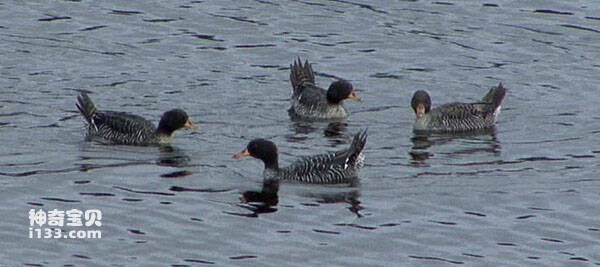Salvadori’s Duck
IUCN
LCBasic Information
Scientific classification
- name:Salvadori’s Duck
- Scientific Name:Salvadori’s Duck,Salvadori's Teal,Salvadorina waigiuensis
- Outline:Waterfowl
- Family:
Vital signs
- length:38-43CM
- Weight:No textual research information is available
- lifetime:No textual research information is available
Feature
It has a slender body and tail, a chocolate-colored head, and dark brown striped feathers resembling tiger skin
Distribution and Habitat
It is distributed in central and southern Africa, including the southern part of the Arabian Peninsula and the entire African continent south of the Sahara Desert (Tropic of Cancer).
It inhabits fast-flowing mountain streams, alpine lakes, and operates at altitudes between 500 and 4000 meters above sea level.
Appearance
The duck is 38-43 cm long. Unique in appearance, it has a slender body and tail, a chocolate-colored head, and dark brown striped feathers resembling tiger skin. Bright yellow beak, orange legs. The male and female differ only in eye color, with the male having red irises and the female having brown ones.
Details
Decorative Duck (scientific name: Salvadorina waigiuensis) foreign names Salvadori's duck, Salvadori' sTeal is a social teal of the family Anatidae.

Patterned ducks take aquatic invertebrates, tadpoles, small fish as their main food, and also eat plant feed. Floating on the surface, taking turns diving for food. I never travel far in my life. Very territorial during breeding, using the flapping of their wings to repel others.
The breeding season of patterned ducks varies with their distribution at different altitudes, with most nesting between June and September. During this time, the duck lays two to four eggs in a nest in the grass between the riverbank vegetation, which incubates for 28 days.
Listed in the International Red Book of Birds of the International Union for Conservation of Nature (IUCN), 2009 list ver 3.1 - Vulnerable (VU).
Protect wild animals and eliminate wild meat.
Maintaining ecological balance is everyone's responsibility!








